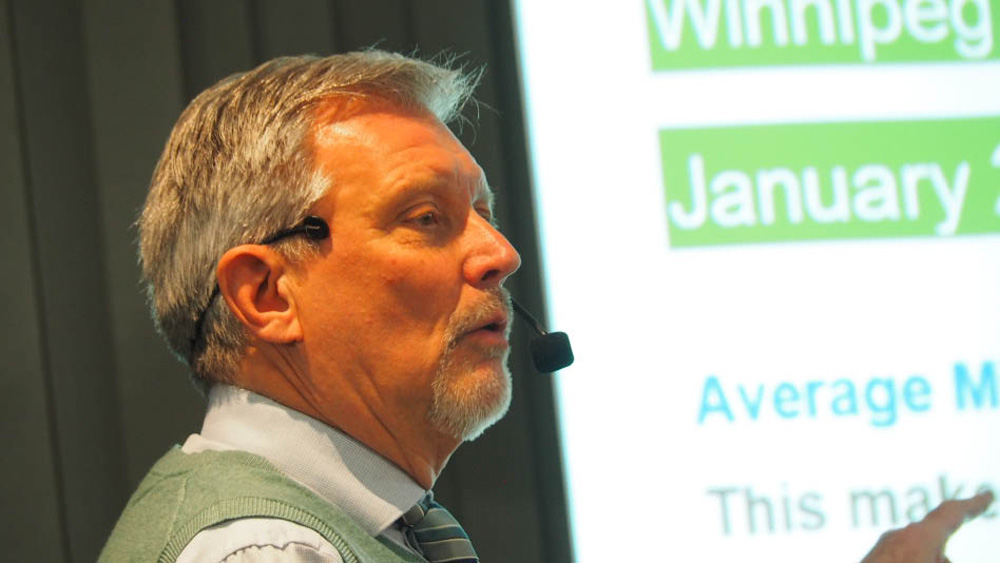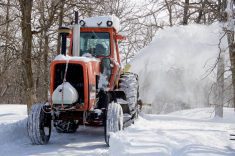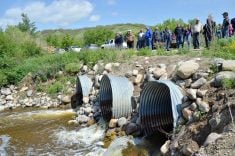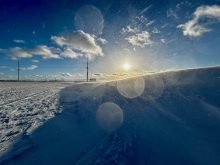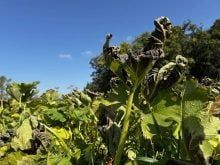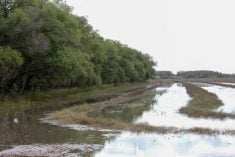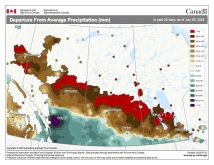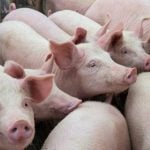Eastern Manitoba could have a climate akin to the American Central Great Plains by 2080, according to one climatologist from the University of Winnipeg.
“In a high-carbon scenario, Beausejour is expected to have climates like Missouri and Kansas currently have in the summertime,” Danny Blair told a crowd of producers Feb. 5.
Blair is co-founder and co-director of the university’s Prairie Climate Centre, which studies the effects of climate change on the Canadian Prairies. He was among the speaking lineup at Beausejour’s annual Brokenhead River Agricultural Conference Feb. 5-6.
Read Also
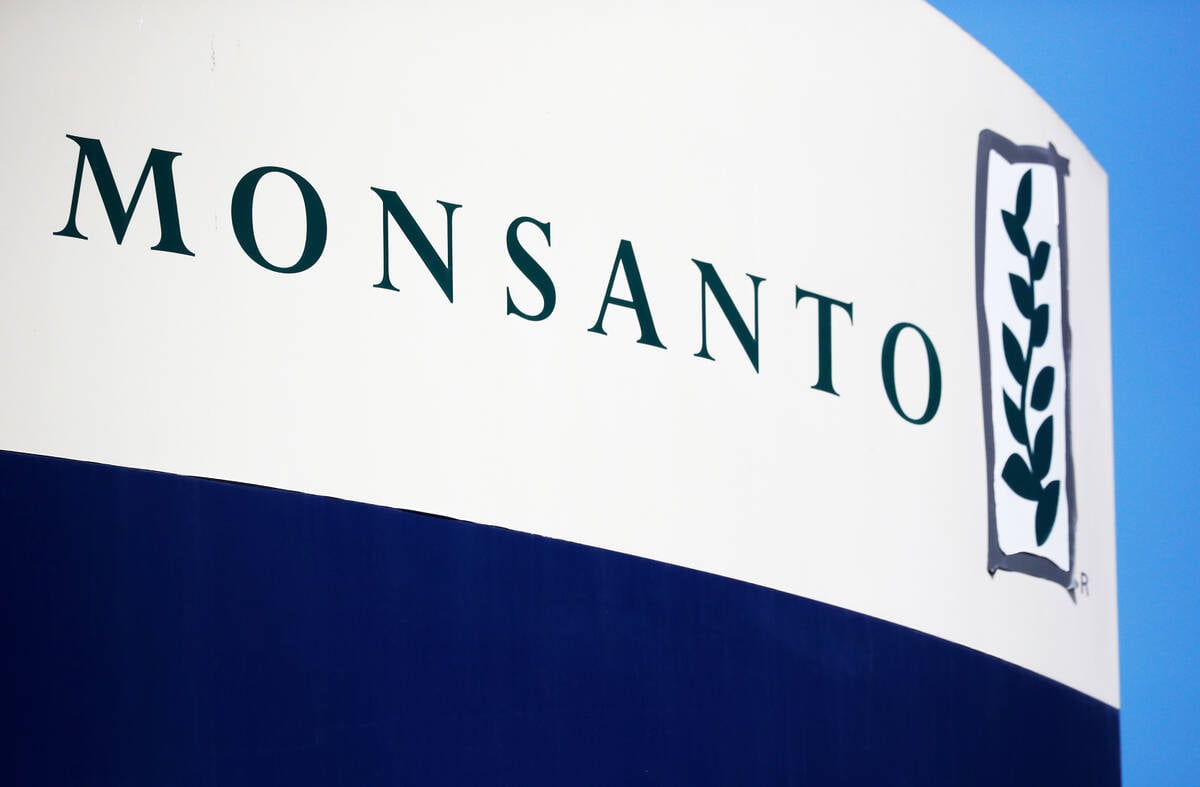
Journal pulls long-cited glyphosate study for ethics violations
The journal Regulatory Toxicology and Pharmacology has retracted a 2000 Monsanto-linked glyphosate review, drawing new scrutiny as Bayer faces mounting legal pressure.
“American climates are coming our way,” he said. “The warmer climates south of us are migrating to the north. And it’s happening in Europe and in the northern hemisphere; everything’s moving north.”
Why it matters: Climate change is expected to bring mixed blessing to Manitoba farmers with longer growing seasons, but also more droughts.
The climate centre was launched in 2014 in response to growing demand for easily digestible climate maps and charts. “They didn’t have the expertise—hardly anybody has the expertise—to go online and get all that free-to-download climate data and make it into graphs and maps,” said Blair. “That’s what we do. We take that really complex data and we mobilize it and make it understandable.”
Today, anyone can access those maps and charts through the centre’s Climate Atlas (climateatlas.ca). The interactive map tool lets users choose a municipality or region in Canada and access all available climate information from that region.
“We have about 400 towns and cities across Canada. We also have thousands of grid squares across Canada that you can select, even if there’s not a town there,” said Blair.
Users can also select data from the recent past (1976–2005), the near future (2021–2050) or the distant future (2051–2080). The atlas’s agriculture tab, meanwhile, allows users to look at things like frost-free season, date of first fall frost, date of last spring frost, corn heat units and growing degree days.
The data comes from the average of 24 different climate models.
“There’s all these research centres that collect (and) crunch all the climate data,” said Blair. “They input the carbon dioxide and they input how the atmosphere works. They’re essentially super-duper weather models.”
There is significant variation in the various models, but they all trend in the same direction: they expect the future to be warmer.
The atlas forecasts two different projections: a high-carbon scenario and a low-carbon scenario. Those are based on what the Intergovernmental Panel on Climate Change (IPCC) calls representative concentration pathways (RCP). The low-carbon scenario, based on a 4.5 RCP outcome, imagines a world that meets fairly aggressive carbon targets. The high-carbon scenario, based on a 8.5 RCP trajectory, imagines a world where no efforts are made to reduce carbon.
What we can expect
Blair expects the reality to be somewhere in the middle.
He walked the audience through several climate predictions for the town of Beausejour. Historical data from 1976 to 2005 showed that Beausejour had 12 days per year that reached 30 C or more.The low-carbon scenario predicted Beausejour could expect 25 days above 30 C by 2050. By 2080, by the model’s numbers, that would rise to 34 days.
By 2050, even in the low-carbon scenario, the region around Riding Mountain National Park is expected to have more corn heat units than currently seen in Manitoba’s corn belt in the Red River Valley.
“Clearly, there are some positive aspects to agriculture,” said Blair. “[Including] longer growing seasons, opportunities to grow new crops, and get higher yields.”
At the same time, that heat would have implications for soil moisture and crop health. Canola, for example, may suffer when it comes to heat-induced flower abortion and pod loss.
Blair also noted that the annual number of days of -30 C is going down. By 2080, Beausejour is expected to have 13 fewer -30 C days.
Not only are winters going to get warmer, they are also expected to be shorter. In the low-carbon scenario, Beausejour can expect 26 more frost-free days. Under the high-carbon scenario, that increase rises to 39.
Blair put a caveat to that apparent silver lining. Overall, the Prairies are expected to get wetter, but not during the summer. For the hottest months of the year, precipitation is expected to decrease. “If you look across the 24 models, there’s lots of scatter, but the average projects drier in July and August, and that suggests drought.”
In general, he said, farmers should beware more volatile weather.
“In the long run, we expect more intense precipitation events that can cause localized and extensive flooding and, at the same time—and sometimes in the same year—drought,” he said. “Drought should be expected to become much more frequent and intense.”
As a result, Blair said water management will become a serious issue, perhaps requiring more water storage and other adaptive methods to deal with the changes.
But Blair added that he’s confident farmers are up to the challenge.
“You’ll figure this out,” he said. “The farm community has a reputation for innovation and adaptation; you’re going to need that. We all will.”


